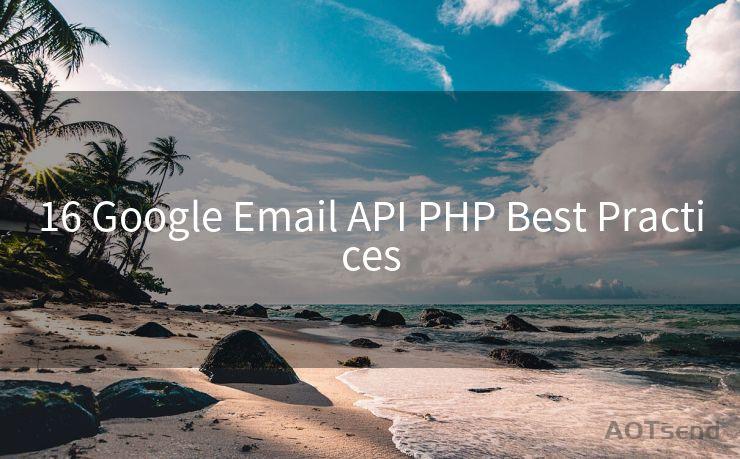16 Google Email API PHP Best Practices




When it comes to integrating the Google Email API with PHP, following best practices is crucial for ensuring smooth and efficient operations. In this article, we'll explore 16 essential best practices for integrating the Google Email API with PHP, focusing on security, performance, and maintainability.
1. Understand the API
Before diving into the integration, it's vital to understand the capabilities and limitations of the Google Email API. Read the official documentation thoroughly to grasp its features, authentication methods, and rate limits.
2. Secure Authentication
Implement OAuth 2.0 for secure authentication. This ensures that only authorized users can access their Gmail data through your application.
3. Handle Errors Gracefully
Prepare your code to handle API errors gracefully. Use try-catch blocks to manage exceptions and provide meaningful feedback to users in case of failures.
4. Optimize API Requests
Minimize the number of API requests by batching operations and caching data when possible. This helps reduce latency and improve overall performance.
5. Use the Latest Libraries
Always use the latest version of the Google API PHP Client Library. This ensures compatibility with the latest API changes and security updates.
6. Validate and Sanitize Inputs
Validate and sanitize all user inputs to prevent security vulnerabilities like SQL injection or cross-site scripting (XSS).
7. Implement Pagination
When fetching large datasets, use pagination to limit the amount of data retrieved in a single request. This helps avoid timeouts and memory issues.
8. Monitor Rate Limits
Keep track of your API request rate to avoid hitting Google's rate limits. Implement logic to handle rate limit exceptions gracefully.
9. Log API Activity
Maintain detailed logs of API activity for troubleshooting and auditing purposes. This helps identify and resolve issues quickly.
10. Test in a Sandbox Environment
Before deploying to production, test your integration in a sandbox environment. This allows you to simulate various scenarios and ensure everything works as expected.
11. Follow RESTful Principles
Adhere to RESTful principles when designing your API integration. This ensures your application remains scalable and maintainable.
12. Use HTTPS
Always use HTTPS for secure communication with the Google Email API. This protects sensitive data from being intercepted.
13. Implement Retry Logic
Incorporate retry logic into your application to handle temporary failures or network issues. This improves the reliability of your integration.
14. Monitor and Alert
Set up monitoring and alerting for critical errors or unusual activity. This helps you respond quickly to potential issues.
15. Document Your Code
Properly document your code and integration process. This makes it easier for other developers to understand and maintain the codebase.

🔔🔔🔔
【AOTsend Email API】:AOTsend is a Managed Email Service for sending transactional emails. Support Email Types: reminders, authentication, confirmations, notifications, verification codes, invoices, password resets, account activations, billing statements, two-factor authentication (2FA), and one-time passwords (OTP) emails, etc. $0.28 per 1000 Emails. 99% Delivery, 98% Inbox Rate.
You might be interested in:
Why did we start the AOTsend project, Brand Story?
What is a Managed Email API, How it Works?
Best 25+ Email Marketing Platforms (Authority,Keywords&Traffic Comparison)
Best 24+ Email Marketing Service (Price, Pros&Cons Comparison)
Email APIs vs SMTP: How they Works, Any Difference?
16. Stay Updated
Regularly check for updates to the Google Email API and adjust your integration accordingly. This ensures compatibility and takes advantage of new features or improvements.
By following these best practices, you can ensure a smooth and efficient integration of the Google Email API with PHP, providing a better user experience and reducing potential issues. Remember to always prioritize security, performance, and maintainability in your development process.




Scan the QR code to access on your mobile device.
Copyright notice: This article is published by AotSend. Reproduction requires attribution.
Article Link:https://www.mailwot.com/p6642.html



